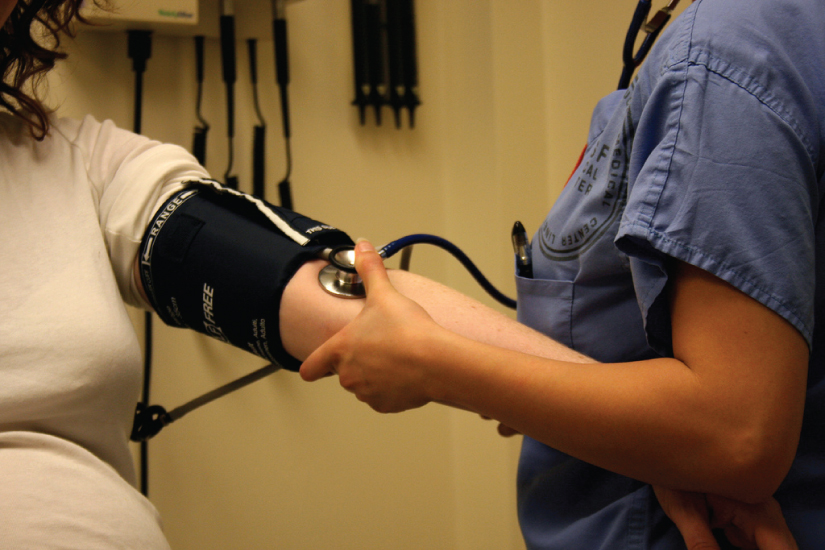
|
Ch 06: Head Somatic & Visceral Sensory Systems
Author:
M.D.Stephen VoronLecturer
University of Utah
USA
Access: |

1.1 An introduction to the human body Read Online
1.2 The chemical level of organization Read Online

After studying this chapter, you will be able to:
Though you may approach a course in anatomy and physiology strictly as a requirement for your field of study, the knowledge you gain in this course will serve you well in many aspects of your life. An understanding of anatomy and physiology is not only fundamental to any career in the health professions, but it can also benefit your own health. Familiarity with the human body can help you make healthful choices and prompt you to take appropriate action when signs of illness arise. Your knowledge in this field will help you understand news about nutrition, medications, medical devices, and procedures and help you understand genetic or infectious diseases. At some point, everyone will have a problem with some aspect of his or her body and your knowledge can help you to be a better parent, spouse, partner, friend, colleague, or caregiver.
This chapter begins with an overview of anatomy and physiology and a preview of the body regions and functions. It then covers the characteristics of life and how the body works to maintain stable conditions. It introduces a set of standard terms for body structures and for planes and positions in the body that will serve as a foundation for more comprehensive information covered later in the text. It ends with examples of medical imaging used to see inside the living body.
Question: If this area was selectively destroyed on both sides, could vomiting be induced by either pharyngeal tickling or gastric distress?
Choices:
Yes.
No.
Question: Neurons of this nucleus have synaptic connections with the nucleus of nerve VII (facial nerve) that are essential for the corneal reflex. If the reflex is absent, because the afferent limb is interrupted, which of the following would be present upon stimulation of the side of the lesion?
Choices:
Ipsilateral reflex present, contralateral absent.
Contralateral present, ipsilateral absent.
Ipsilateral absent, contralateral absent.
Ipsilateral present, contralateral present.
Question: A person with a lesion of this nerve, between the brain stem and the ganglion, would have difficulty with which of the following?
Choices:
Chewing.
Swallowing.
Sensation from the cornea.
Pain from the anterior two thirds of the tongue
Question: If a growth in the region of the arrow produces sufficient pressure on the middle cerebellar peduncle to cause degeneration of the incoming axons, which of the following will occur?
Choices:
Loss of facial sensation.
Loss of sensation from part of the tongue.
Loss of corneal reflex.
A and C.
A, B, and C.
Question: Would you expect all portions of the face to be represented equally in this nucleus?
Choices:
Yes.
No.
Question: To what cortical region does this nucleus of the thalamus project?
Choices:
Transverse temporal lobe.
Postcentral gyrus.
Precentral gyrus.
Prefrontal cortex.
Question: Where are the cell bodies located for the axons that innervate the taste buds on the posterior third of the tongue?
Choices:
Trigeminal ganglion.
Geniculate ganglion.
Petrosal or inferior glossopharyngeal ganglion.
Nodose or inferior vagal ganglion.
Question: Where are the cell bodies located for the axons that form the descending tract of V ?
Choices:
Trigeminal ganglion.
Dorsal root ganglion.
Descending nucleus V.
Chief sensory nucleus of V.
Question: What other cranial nerve is most likely to be affected if a tumor of nerve VIII produced pressure in the cerebellopontine angle (the circled region)?
Choices:
XII.
V.
VI.
VII.
Question: How do axons from this nucleus reach the postcentral gyrus?
Choices:
Internal capsule.
External capsule.
Extreme capsule.
Internal medullary lamina.
Question: The area of the medulla containing the spinal nucleus of V may be supplied by this artery (arrow). Name the artery?
Choices:
Anterior inferior cerebellar artery (AICA).
Superior cerebellar artery.
Anterior spinal artery.
Posterior inferior cerebellar artery (PICA).
Posterior cerebral artery.